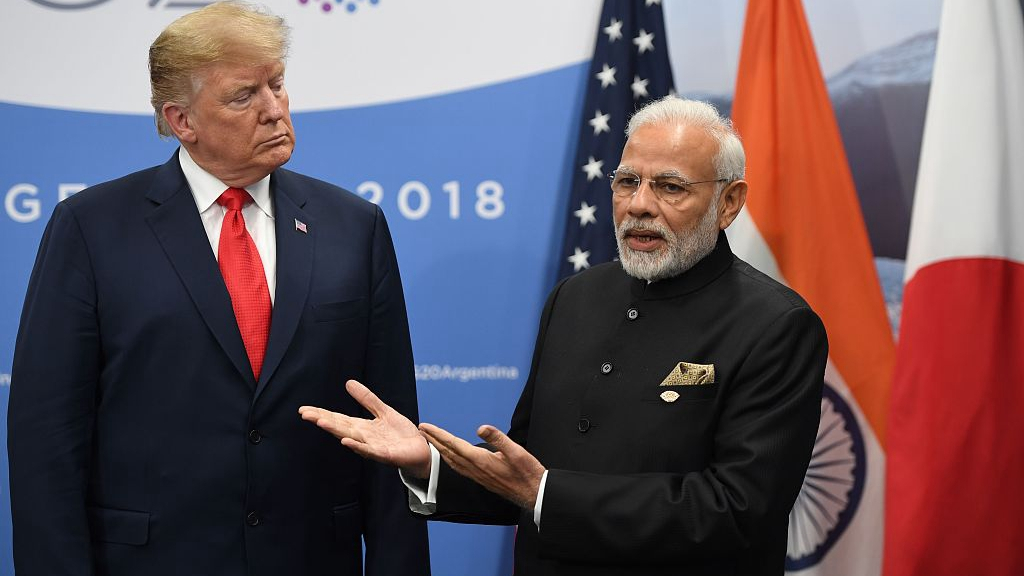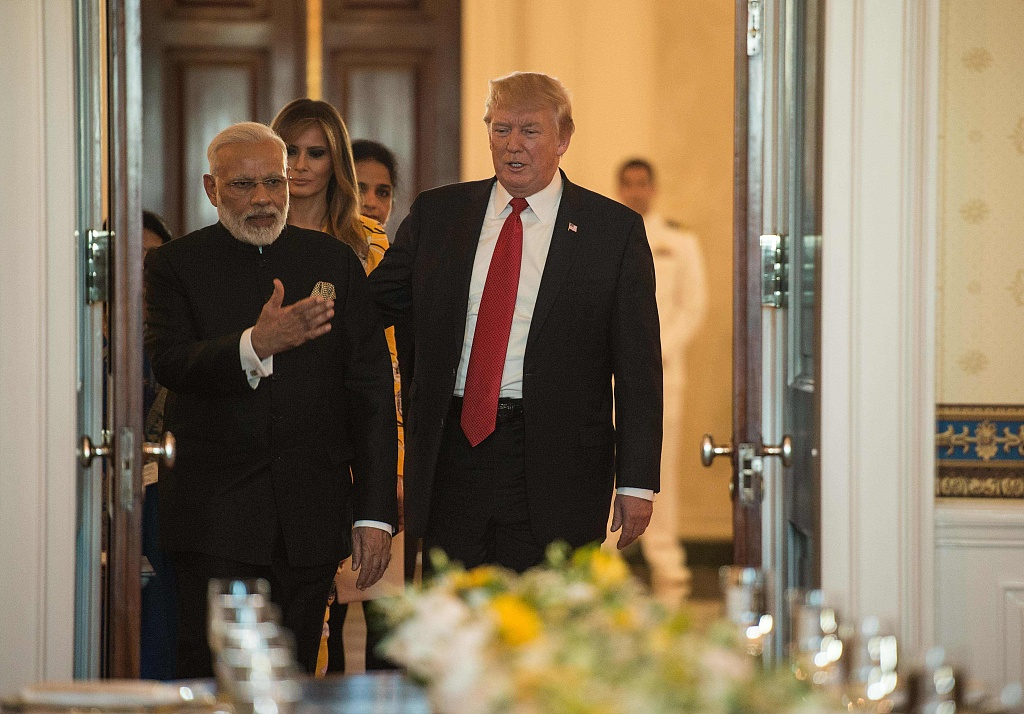
Opinion
20:53, 03-Jun-2019
Trump's next tariff front: India
Liu Jianxi

Editor's Note: Liu Jianxi is an opinion editor at CGTN. The article reflects the author's views, and not necessarily those of CGTN.
Adding onto the White House's full-fledged trade war with China and tariff threats to Mexico if it didn't step up efforts to stop irregular migration, Donald Trump's global trade fight has opened a new front in New Delhi.
Last Friday, the capricious president announced the termination of India's designation as a "beneficiary developing country" under the Generalized System of Preferences (GSP), which grants some Indian products duty-free access to the American market.
Despite New Delhi's intention to "find a mutually acceptable way forward," Trump is firm on the decision. "I have determined that India has not assured the United States that India will provide equitable and reasonable access to its markets," Trump reportedly said.
The move is believed to be the toughest measure against New Delhi by the Trump administration. Since assuming office, Trump has been holding high the banner of "America First." Against this backdrop, the "pious" president has been straining every nerve to fix the so-called unfair trade practices and actively withdrawing the United States from a slew of international pacts and organizations that the president believes is detrimental to the pursuit of "Making America Great Again."

Indian Prime Minister Narendra Modi (L), U.S. President Donald Trump and First Lady Melania Trump (2nd L) have dinner in the Blue Room at the White House in Washington, DC, June 26, 2017. /VCG Photo
Indian Prime Minister Narendra Modi (L), U.S. President Donald Trump and First Lady Melania Trump (2nd L) have dinner in the Blue Room at the White House in Washington, DC, June 26, 2017. /VCG Photo
Under the GSP, billions of dollars of Indian exports are exempted from U.S. tariffs. But in the meantime, U.S. exports, according to petitions from the National Milk Producers Federation (NMPF) and the Advanced Medical Technology Association (AdvaMed), are not granted equitable access to the Indian market, especially after New Delhi placed a cap on the prices of domestically-made medical devices. This is not what the Trump administration was ready to accept.
In fact, even if the United States reaped huge profits from the Indian market of 1.3 billion customers, Trump would still strip India, one of the world's fastest growing economies, of the special trade treatment. It is the GSP principle that the protectionist president is unhappy about. Petitions by the NMPF and AdvaMed are merely excuses for Trump to challenge the GSP, from which New Delhi is the biggest beneficiary.
The GSP, originally designed to aid development of low-income economies, is, in fact, a boon to developed countries, as ordinary customers could purchase products of the same quality at cheaper prices. The system has also created favorable conditions for high-income economies to expand the market and attract foreign investments. Thus, it has been embraced by the international community.

The 37th India International Trade Fair (IITF) at Pragati Maidan in New Delhi, India, November 18, 2018. /VCG Photo
The 37th India International Trade Fair (IITF) at Pragati Maidan in New Delhi, India, November 18, 2018. /VCG Photo
But the duty-free access to the U.S. market is not what Trump, a tariff man, wants to see. Under the "America First" doctrine, the businessman-turned-president is adept at using tariffs as a tool in his political and economic calculations. Acting as a spokesperson for "free and fair" trade, Trump is, in fact, touting his protectionist policies.
The Trump administration is attributing domestic problems entirely to other countries. Using tariffs to solve trade issues is naïve, especially in the era of global integration. The inherent law of global trade determines that different segments of the global value chain are designated to countries in accordance to their comparative advantages.
For instance, Indian operations, production, and labor costs, according to The National Interest report, are 70 percent lower than developed states and thus the country is on its way to overtaking the United States in some areas. This has raised the anxiety level of the Trump administration.
But tariffs are not the solution. Cooperation is. The Trump administration has to accept the inevitable outcomes of global integration. Going against the tide of history will lead the United States nowhere. The Trump administration has already pulled the trigger against China and Mexico. Firing another shot at India will not only make the United States isolated on the international arena, but more importantly, will be eventually paid by the U.S. economy and ordinary American people.
(If you want to contribute and have specific expertise, please contact us at opinions@cgtn.com.)

SITEMAP
Copyright © 2018 CGTN. Beijing ICP prepared NO.16065310-3
Copyright © 2018 CGTN. Beijing ICP prepared NO.16065310-3